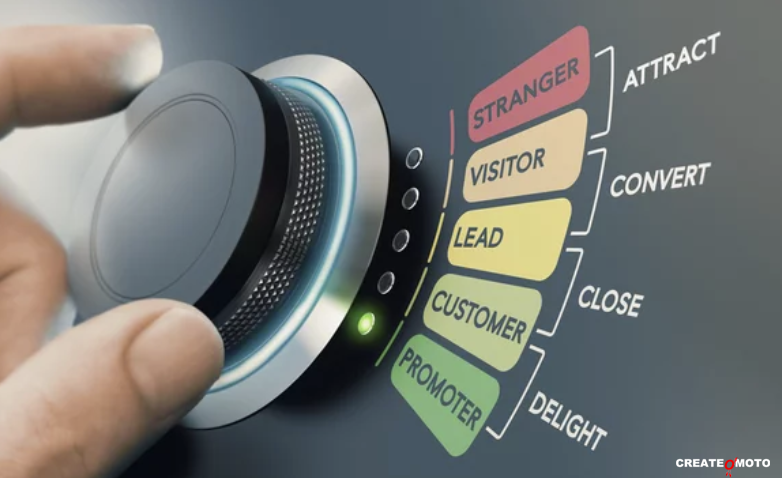Optimizing your sales funnel is one of the most crucial steps in maximizing your business’s revenue. It’s not just about driving traffic to your site but ensuring that every visitor is smoothly guided through the buying journey, turning prospects into loyal customers. In this guide, we’ll walk you through the intricacies of sales funnel optimization, detailing how to fine-tune each stage for maximum conversions.

What is a Sales Funnel?
The sales funnel represents the journey a potential customer takes, from first learning about your brand to making a purchase and beyond. While every business’s funnel may look slightly different, they all follow a similar structure: Awareness, Interest, Decision, and Action.
Understanding each stage of the funnel and tailoring your strategies to meet the needs of your customers at each point is key to sales funnel optimization.
Awareness Stage: Attracting the Right Audience
The first stage of the funnel, Awareness, is where potential customers become aware of your brand. Here, you’re casting the widest net possible, trying to attract as many people as possible while ensuring they’re the right fit for your product or service.
Strategies for the Awareness Stage
- Content Marketing: At this point, your focus should be on providing valuable, educational content that addresses your audience’s pain points. Blog posts, videos, and social media content are excellent ways to establish credibility. For instance, if you’re in the fitness industry, writing blog posts about workout routines or nutrition tips is a great way to draw in visitors.
- SEO and PPC Ads: Implementing both organic and paid strategies is crucial. SEO ensures you’re targeting the right keywords to appear in search results, while pay-per-click (PPC) ads on platforms like Google and Facebook give you immediate visibility. It’s important to align the keywords in your content with the search intent of your audience.
- Social Media Engagement: Platforms like Instagram, LinkedIn, and Twitter are prime locations to engage with potential customers. Create visually compelling and educational content that answers your audience’s burning questions.
Interest Stage: Nurturing Leads
Once you’ve captured the attention of your target audience, they move into the Interest stage. This is where they’re exploring your brand and starting to consider whether your product or service can solve their problem.
Strategies for the Interest Stage
- Lead Magnets: Offering free resources, like eBooks, whitepapers, or templates in exchange for contact information, allows you to capture valuable leads. These resources should directly address the pain points of your audience, offering actionable insights. Consider creating a lead magnet relevant to your industry—such as a checklist or how-to guide.
- Email Marketing: After capturing a lead’s email address, follow up with an automated email sequence that provides further value. Send personalized, informative emails that guide your prospect through their decision-making process. The key here is nurturing, not hard selling.
- Retargeting Ads: Many prospects will visit your website without taking action. Retargeting ads—ads that appear to users who have previously visited your site—can bring them back. These ads should remind them of the value you offer or highlight customer success stories to build trust.
Decision Stage: Closing the Sale
The Decision stage is when the prospect is on the verge of making a purchase. However, this is often the stage where friction can occur, causing prospects to abandon their journey. Your job is to eliminate any barriers and provide the final nudge they need to commit.
Strategies for the Decision Stage
- Clear and Compelling CTAs: Your Call to Action (CTA) must be prominent, clear, and compelling. Whether it’s “Buy Now” or “Request a Demo,” ensure the messaging communicates urgency while emphasizing value. Here’s a good article on improving CTA effectiveness from Wordstream.
- Social Proof: Testimonials, reviews, and case studies play an essential role at this stage. Highlight how other customers have benefited from your product or service. Video testimonials can be particularly persuasive.
- Overcoming Price Objections: At this stage, price is often a sticking point. Limited-time offers, discounts, or flexible payment options can help push the decision in your favor. Clearly communicate the benefits and return on investment (ROI) your product or service provides.
- Streamlined Checkout: The checkout process should be as simple and frictionless as possible. If your checkout process is cumbersome, you risk losing customers who are ready to buy. Optimize the design for mobile, limit form fields, and offer multiple payment methods.
Action Stage: Post-Purchase Optimization
Congratulations, you’ve made the sale! But optimizing your sales funnel doesn’t stop here. The Action stage is an opportunity to turn a first-time buyer into a lifelong customer.
Strategies for the Action Stage
- Onboarding: Providing a smooth onboarding experience makes a significant difference in customer satisfaction. This could include sending a series of welcome emails, offering product tutorials, or even providing one-on-one consultations to ensure the customer is happy with their purchase.
- Upselling and Cross-selling: Suggesting complementary products or premium versions of the customer’s purchase can increase the average order value. These offers should feel natural and helpful, not pushy.
- Loyalty Programs: Incentivize repeat purchases by creating a loyalty program. Offer rewards for every purchase, exclusive discounts for repeat customers, or referral bonuses for bringing in new customers.
- Customer Feedback: After the sale, request feedback to identify areas where you can improve the customer experience. This also helps to build a deeper relationship with your customers and shows that you care about their opinion. Check out ReferralCandy for more ideas on how to keep customers coming back after their first purchase.
Measuring and Analyzing Funnel Performance
To optimize your sales funnel, you need to continually measure its performance. Pay attention to metrics like conversion rates, bounce rates, and customer lifetime value (CLV). Tools like Google Analytics, Crazy Egg, and Kissmetrics can provide insights into where prospects are dropping off and what improvements can be made.
If a significant percentage of visitors are bouncing off your site at the Awareness or Interest stage, your content or landing pages may not be resonating. If you see a drop-off at the Decision stage, perhaps your CTAs aren’t compelling enough or your checkout process needs refinement.
Sales funnel optimization is not a one-time task but an ongoing process. The more you test, tweak, and refine each step, the more effective your funnel will become.



0 Comments